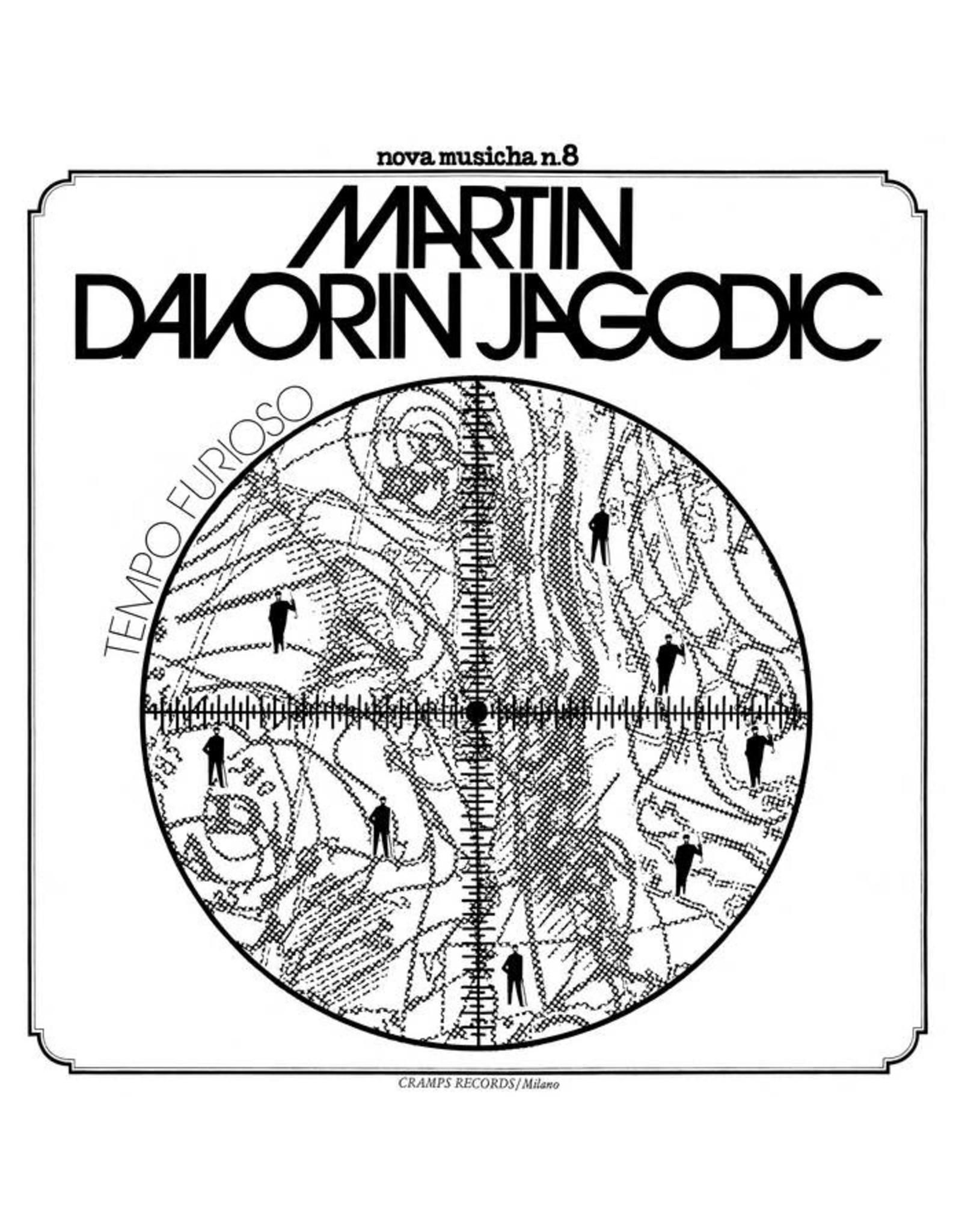Jagodic, Martin Davorin: Tempo Furioso LP
| Availability: | In stock |
Martin Davorin Jagodić (1935 – 2020) was a Croatian contemporary music composer and educator. His work includes theatre music, graphic scores, instructions for performances, multimedia installation art, radio art, electroacoustic music on tape as well as experimental film soundtracks.
Despite a very long series of performances during the years, only one single LP has officially been released under his name, named Tempo Furioso (Tolles Wetter), a collage of electronic and ‘found sounds’ divided in two long movements (one for each side of the LP). Originally released on the Italian Cramps Records label as the 8th volume of the Nova Musicha series dedicated to contemporary avant-garde composers, Tempo Furioso is now made available again on Dialogo in a faithful reproduction of the original gatefold cover artwork, including also an inner sleeve with the English translation of the liner notes.
From the original liner notes of “Tempo Furioso”:
My first thought was to state that ‘Tempo Furioso’ is a version of the song entitled ‘Tolles Wetter’. But things are not so straight-forward (after all, what is a version?), so I prefer to talk a bit about ‘Tolles Wetter’. This way, I am sure that I will be able to avoid illustrating the relationships existing between the ‘version’ of ‘Tempo Furioso’ and the ‘original’, namely the music of ‘Tolles Wetter’. Reading the diagram of ‘Tolles Wetter’ will help in listening to the record. It will also explain why
I am forced to avoid the terms ‘version’ or ‘variation’. These expressions, for several years now, have become faithful counterparts to certain compositions featuring ‘multiple possible versions’; they make us almost automatically think of any ‘Third Sonata’, ‘Klavierstück XI’ or other open works of this kind. Because all of this is very far from my work, I do not want to use any of these terms. They would inevitably mislead the listener [...]. I’m saying all this in order to reassure the listener, who might otherwise think they are in front of a second-hand work (a minor version) and would therefore feel deprived, almost robbed, of the original. So, what is ‘Tolles Wetter’? The actualisation of a (musical) situation – a place, an action – in which we are at home, well warmed up, in our room, while outside there is a storm. The disturbing elements – atmospheric or otherwise – are already there and will eventually find their way into our space. (Have you ever noticed that there are places, whole cities, that are penetrated by frequencies that create a particular kind of sound – oscillations that are in the air?).
They can be fire, or some annoying ‘Tafelmusik’ (“what’s going on under my table?”), wood creaking, wind blowing, as well as lines connecting us with the outside world, far away as it might be (radio stations, for instance). Now, little by little, our situation becomes more complex. It is no longer a question of one story but of several. Bad weather has definitively stabilised (this does not mean that the action always has to be actualised in a violent way; not all possible actualisations are like ‘Tempo Furioso’). Weather and time-duration are confused, we are invaded by memories, by projects... The different situations appear more and more like crystallised and superimposed objects/images, as if one wanted to be everywhere at the same time. Zigzagging through time, stumbling, enlarging the picture... reading makes its way into this picture. Of course, not all actions can be performed at the same time. The overall actualisation/hearing will depend on the organisation of the connections. In sight of a global actualisation/hearing, roles are distributed, and the scripts of the different versions of the same story are written. At this point, we can already better understand the sense in which - regarding the relationship between ‘Tolles Wetter’ and ‘Tempo Furioso’ - the term ‘version’ has little meaning. Let’s say, therefore, that ‘Tempo Furioso’ is a possible actualisation that came to be because of its recording. This also explains why – and perhaps helps instigate different and diverse possibilities of overlapping sides and records are proposed.


